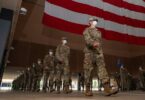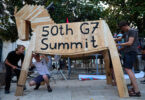In the remote, rugged landscapes of North Waziristan, the whispers of another drone strike stir a familiar dread among the local Pashtun population. This region, a former tribal area of Pakistan, has been a battleground for military and militant activity for over two decades. The recent uncertainty around alleged US drone activities, as highlighted by Pentagon Deputy Spokesperson Sabrina Singh’s comments-or lack thereof-only adds layers to an already complex crisis. Singh’s guarded statement, “I do not have anything on that,” in response to inquiries from The Frontier Post, reflects a broader opacity surrounding military operations in the area.
The local Pashtun communities have borne the brunt of this enduring conflict. For the last twenty-five years, they have navigated a precarious existence amid the relentless push and pull of military offensives and terrorist insurgencies. The presence of Tehrik-i-Taliban Pakistan (TTP) and ISIS fighters in these former tribal lands speaks to a harsh reality: the area remains a hotbed for extremism, drawing in yet more violence as various forces vie for control.
Recent US-Pakistan security dialogues, aimed at bolstering cooperative efforts against such threats, must also prioritize the safety and well-being of innocent civilians. These discussions are essential, given the history of the region and the heavy toll that military operations can exact on civilian populations. The memories of displacement, destruction, and death are still vivid for many local residents, reminders of the high costs of warfare.
Furthermore, the scrutiny surrounding former Afghan President Ashraf Ghani and former National Security Advisor Hamdullah Mohib’s alleged prior contacts with the Taliban-potentially exacerbating the chaos during the US withdrawal from Afghanistan-suggests a pattern of oversight and misjudgment that has profound implications for regional stability. This scrutiny, while necessary, also underscores the need for greater transparency and accountability in how military and strategic decisions are made and executed.
As we consider the future of North Waziristan and its people, it is crucial to remember that any military strategy must be balanced with an acute awareness of its humanitarian impact. The international community, particularly entities like the US and Pakistani governments, must ensure that their actions do not further victimize an already vulnerable population. This includes strict adherence to international laws governing warfare, rigorous oversight to prevent civilian casualties, and a transparent, communicative approach that keeps local communities informed and engaged in their own defense.
The story of North Waziristan, as reported by Jalil Afridi, is more than a narrative of conflict. It is a poignant reminder of the human cost of war. It challenges policymakers and military leaders alike to rethink their strategies, not just in terms of eliminating threats but also in safeguarding the lives and futures of millions of innocent people. The Pashtuns of North Waziristan, resilient yet weary, deserve a strategy that prioritizes their safety and seeks to restore peace without further bloodshed. As operations continue, each move must be weighed with consideration for those who have suffered enough. Only through such conscientious planning can hope be restored in a region long shadowed by the specter of war.







